If you are having trouble with your MacBook, there’s a chance that it’s dead. Various factors can cause dead laptops, and sometimes it’s difficult to know which is causing the problem. Like most people, you probably don’t think about your hard drive very often. After all, it just stores your photos, music, and movies! But if your hard drive starts to act up, you should know how to fix it.
A failing or dead hard drive can cause all sorts of problems, from being unable to start up your computer to losing all your important data. In this article, we’ll discuss the different ways a hard drive can become dead and how to recover data from a dead MacBook.
Table of Contents:
Why is your MacBook Dead?
A dead hard drive is no longer able to read or write data. In most cases, this problem can be attributed to a failure of the hard drive’s spinning platters. When these platters become damaged, they cannot read or write data correctly. As a result, the computer cannot access any data on the dead hard drive.
Dead hard drives can be a costly and frustrating problem. Some of the common reasons behind a failed hard drive.
- Bad sectors: Dead hard drives can often result from bad sectors. When these sectors become corrupt, they can cause problems with the data stored on the drive.
- Moisture: Dead hard drives can also succumb to moisture damage. This occurs when water seeps into the hard drive and causes physical damage to the drive’s internals.
- Overheating: Overheating can also cause dead hard drives. If the hard drive is too hot, its components can fail.
- Physical damage: Dead hard drives can also be victims of physical harm.
- Power failure: Whether it’s a sudden power outage or an increase in electrical charge on power lines, power problems can seriously damage Mac hard drives.
- Battery issues: If you’re experiencing problems with your MacBook, there may be a problem with the battery. To check whether the battery is the cause of the issue, try this simple test: Charge your battery up to FULL capacity and then power on your MacBook. If it starts up successfully, the problem is most likely with the battery. If it doesn’t start up, there’s a chance that the battery is defective and needs to be replaced.
Now, you must be wondering whether you can recover your data from your dead hard drive. In most cases, it is possible to recover data from a dead hard drive. However, this process can be time-consuming and require specialized tools. Therefore, if you think your Mac hard drive is dead, it is best to take immediate action before it becomes a permanent loss.
How to Recover Data From a Dead MacBook?
Below we have mentioned various methods based on the severity of the issue to help you recover your data from your dead MacBook.
Method 1: Recover Files from a Dead MacBook Pro Hard Drive with Data Recovery Software
To quickly and safely restore data from the dead hard drive of a MacBook Pro, make use of the Yodot Mac Data Recovery tool. Yodot is built with dual-scan algorithms designed to perform a deep sector-by-sector level scan to retrieve data from a broken hard drive. The User-friendly interface makes data recovery an effortless and intuitive experience.
Steps To Recover Data From Dead MacBook Using Yodot
Follow the below simple steps to recover your data from a dead MacBook Pro hard drive:
- Download and install the Yodot Mac Data Recovery tool on your Mac system
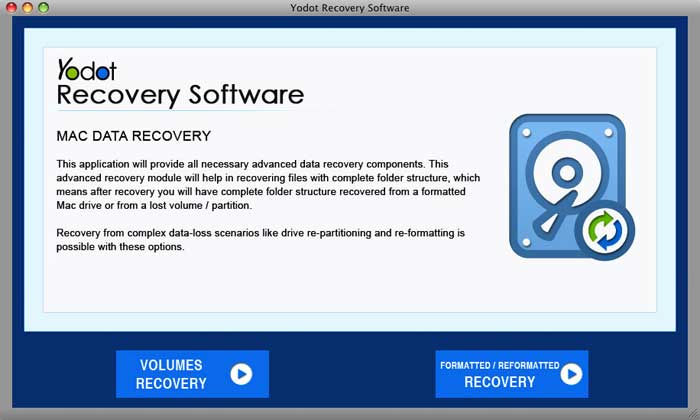
- Launch the application, and follow the main screen instructions
- The tool scans and displays all your Mac’s logical and external volumes. Select the dead hard drive from which you want to recover your data and hit the Scan button.
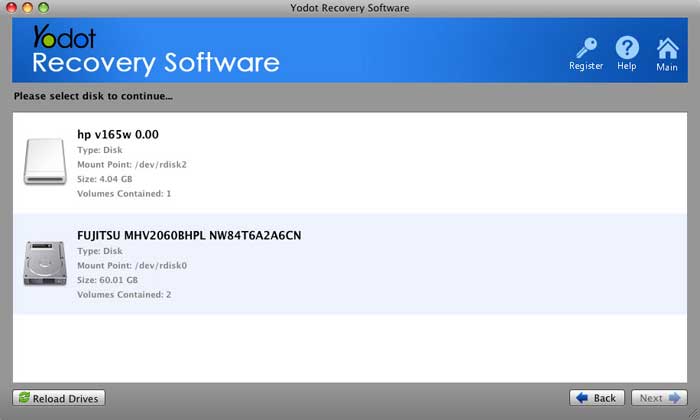
- The tool scans the selected volume and displays all the recoverable files in Mac finder-styled interface.
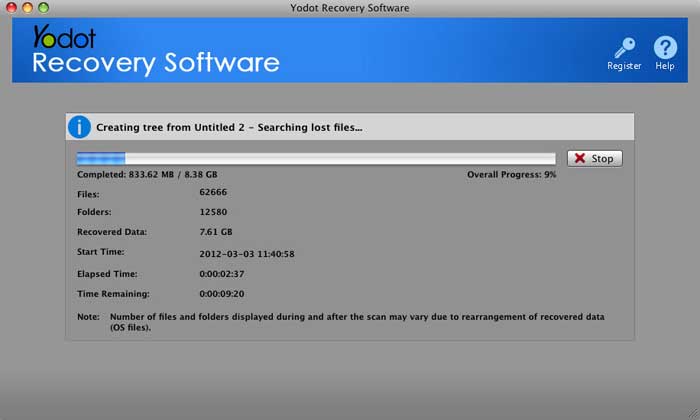
- You can Preview the files before recovering them.
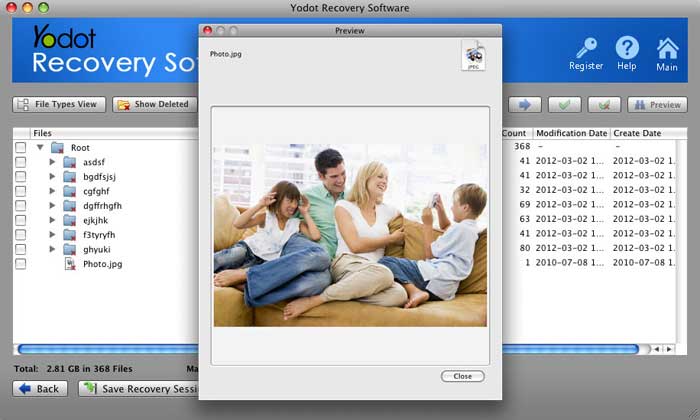
- Save the recovered files at a location of your choice.
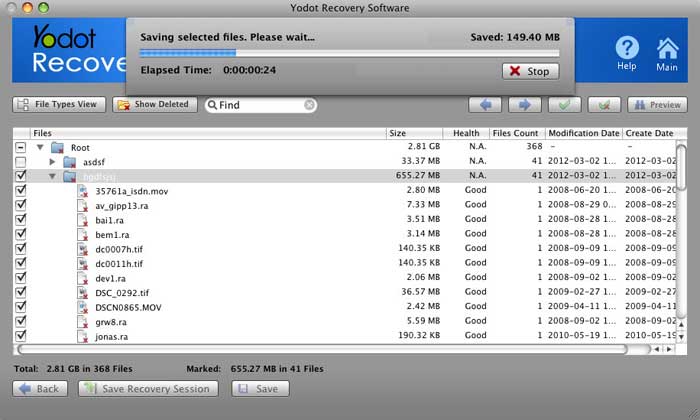
Method 2: Convert Dead Mac Hard Drive to External Hard Drive and Recover Data
Since your Mac hard drive is dead, which means your Mac cannot start because there are no system files to boot your Mac. In this situation, you can remove the failed hard drive from your Mac, put it in an external enclosure, and use another computer to restore files from the dead hard drive.
Note: Follow the official instructions to remove the defective hard drive from your Mac. Visit the manufacturer’s website for instructions on removing the hard drive from your Mac.
- Remove the failed hard drive from your Mac and place it in the external drive enclosure.
- Connect the external drive to your working Mac using the appropriate cable.
- For Windows PCs: Open Windows File Explorer and double-click to see the data on your hard drive.
- For Mac: Double-click the hard drive icon on your desktop and make sure you can access the hard drive and its data.
- Select the files you want to recover and save if you have access to your Mac’s hard drive.
Method 3: Use Bootable Installer To Recover Data From a Dead MacBook Hard Disk
If you want to recover data on the same Mac that lost data, you can create a macOS bootable USB drive and use it to boot your dead Mac. Then you can recover the data using data recovery software. Below is how to do this on your computer.
- On the secondary Mac computer, download the macOS installer from the App Store.
- Connect a compatible USB drive to your Mac. This will be your macOS bootable USB media.
- Click Launchpad, search for Terminal and click it to launch the Terminal app on your Mac.
- Once the Terminal app is launched, enter the following command to create a bootable macOS USB drive.
Note: Ensure you’re using the commands that apply to your macOS version.
For example-
Catalina:
sudo/Applications/Install\macOS\Catalina.app/Contents/Resources/createinstallmedia –volume /Volumes/MyVolume
Sierra:
sudo/Applications/Install\macOS\Sierra.app/Contents/Resources/createinstallmedia –volume /Volumes/MyVolume –applicationpath /Applications/Install\ macOS\ Sierra.app
- Your bootable USB is now ready. Plug it into your dead Mac and boot your Mac from the bootable USB drive.
- After the Mac boots up successfully, select the files you want to recover and save them at a location of your choice.
Method 4: Recover Files From Dead/Crashed Mac Hard Drive Using Target Disk Mode
Intel-based Macs have a boot mode called Target Disk Mode. This is especially useful when retrieving content from a Mac that cannot successfully boot from its Operating System. In addition, M1 Mac has a similar feature called Shared Disk.
Target Disk Mode or Shared Disk transfers a crashed Mac to an external hard drive that can be accessed from another Mac or PC.
Important Note: You can physically connect a dead MacBook to a Windows PC, but Windows computers use a different file system, so the PC cannot read the hard drive without third-party tools. Therefore, getting another Mac for this method to work is recommended.
1. Connect the two Macs using the appropriate Firewire or Thunderbolt cable.
2. Shut down the unbootable Mac.
3. Turn on your Mac and immediately hold down the T key.
4. When a non-bootable Mac enters target disk mode, a hard disk icon appears on the working Mac.
4. Double-click on the icon to open the failed Mac’s hard drive and copy the files you want to recover to a working Mac or other devices.
5. Eject the hard drive of the unbootable Mac. And you are done.
Method 5: Recover Data From Dead MacBook Air With Disk Images
With the help of Disk images, you can manage and restore your data. By creating a disk image, you can protect your files and folders from accidental deletion or corruption. You can also use disk images as a backup solution. Additionally, you can use disk images to recover lost data from a dead hard drive. Finally, you can restore your files without reinstalling your operating System by creating a disk image of your Mac hard drive.
Follow the below Steps to create disk images in your macOS:
1. Connect an external storage device to your Mac using a suitable card reader.
2. Now, Boot your Mac into macOS Recovery mode.
For Intel Mac:
- Shut down your Mac computer.
- Press the power button.
- Immediately press and hold the Command + R key.
For M1 Mac: Shut down your Mac computer, press and hold the Power Button until seeing the “Loading Startup options,” then choose Options > Continue.
3. Click on Disk Utility > Continue.
4. Select File > New Image > Image from Folder from the top menu bar.
5. Select the folder containing the data you want to restore and click Open.
6. Enter a name of your choice for the disk image and save it to your external device.
7. Select whether to encrypt the image from the Encryption drop-down menu.
8. Select Read/Write from the Format drop-down menu.
9. Click Save > Finish.
After successfully creating the disk image, you can see all the recovered files by simply connecting the external hard drive to the working Mac and double-clicking the hard drive icon installed on your desktop.
Conclusion
Overall, recovering data from a dead MacBook is relatively easy if you take the right actions. However, if you tried all the methods mentioned above, but your Hard Drive is still not working, your Mac may have a hardware issue, and you will need to take it to the apple store for repair. Moreover, always take a backup of your Mac hard drive to prevent data loss. If you have any further queries regarding the article, please use the comment section below.
